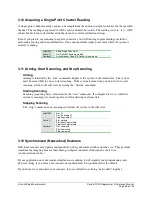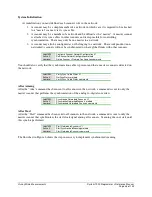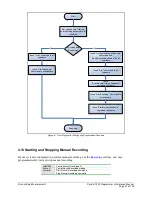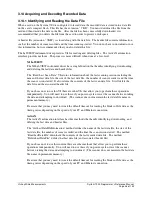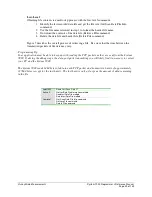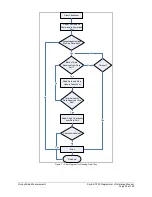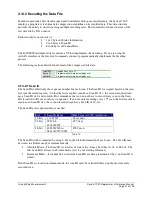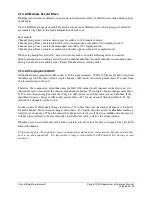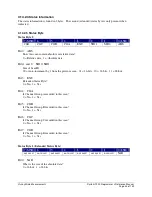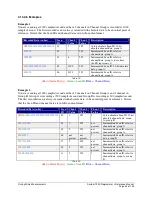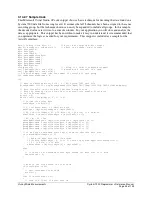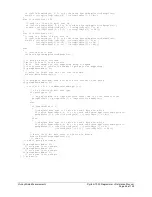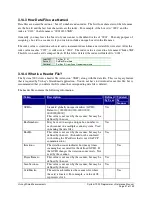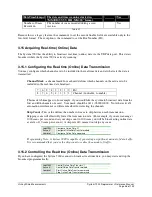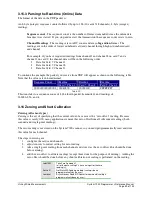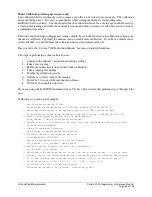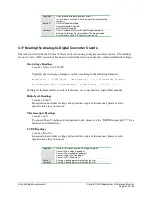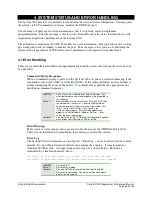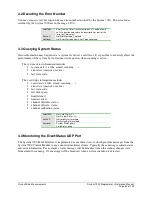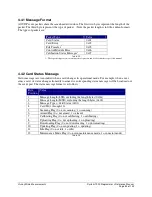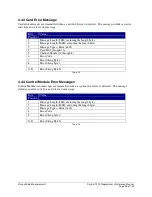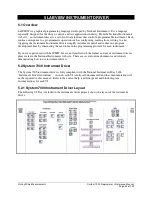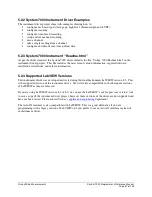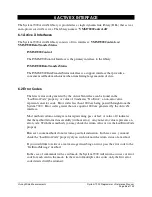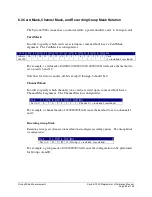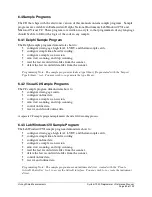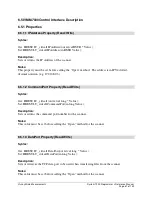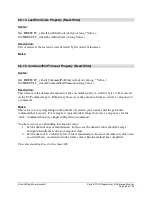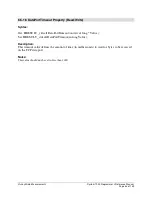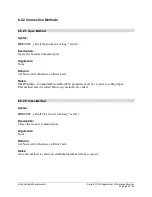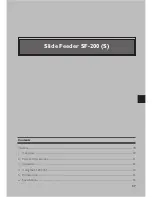
Vishay Micro-Measurements
System 7000 Programmer’s Reference Manual
Page 49 of 142
3.15.3 Parsing the Real-time (Online) Data
The format of the data in the UDP packet is:
An 8-byte (integer) sequence counter followed by up to 128 (16 cards X 8 channels), 4-byte (integer)
readings.
Sequence count
- The sequence count is the number of frames transmitted since the online data
broadcast was started. If you stop and re-start the transmission the sequence count resets to zero.
Channel Readings
- The readings are in ADC counts and are in
big-endian
format. The
readings are in the order of lowest numbered card and channel through highest numbered card
and channel.
For example, if you have requested readings from channel 1 and channel 8 on card 7 and a
channel 1 on card 9, the channel data will be in the following order:
Data for Card 7, Channel 1
Data for Card 7, Channel 8
Data for Card 9, Channel 1
To continue the example, the packet you receive from UDP will appear as shown in the following table.
Note that the values are in hexadecimal.
Sequence Count
Reading
Card 7, Chan 1
Reading
Card 7, Chan 8
Reading
Card 9, Chan 1
0000000000000004 00040200
00000100
FFFFFFFC
Table 22
This translates to a sequence count of 4 (the fourth packet transmitted), and readings of
262656, 256, and -4.
3.16 Zeroing and Shunt Calibration
Zeroing (all sensor types)
Zeroing is the act of specifying that the current value of a sensor is the “zero offset” reading. Because
this value is rarely 0.00, many applications remove this zero offset from all subsequent readings (both
scanned and single-point readings).
The zero reading is not stored on the System 7000 scanner, so you must programmatically read and store
this value for each channel.
The steps in zeroing are
1.
configure the cards and channels,
2.
adjust sensors to correct setting for zero reading,
3.
take a single-point reading from each channel and store it as the zero offset (this should be done
before arming),
4.
add the zero offset to all data readings (except those done for the purpose of zeroing). Adding the
zero offset should be done before any shunt calibration or scaling is performed on the reading.
LabVIEW
Take Zero Reading VI
(all of the data scaling VIs have an input for the zero
reading(s))
Active X
GetStaticADCReading method (scaling is done
programmatically by the user)
Low-level
Asynchronous Read A/D Converter command (scaling is
programmatically done by user)

